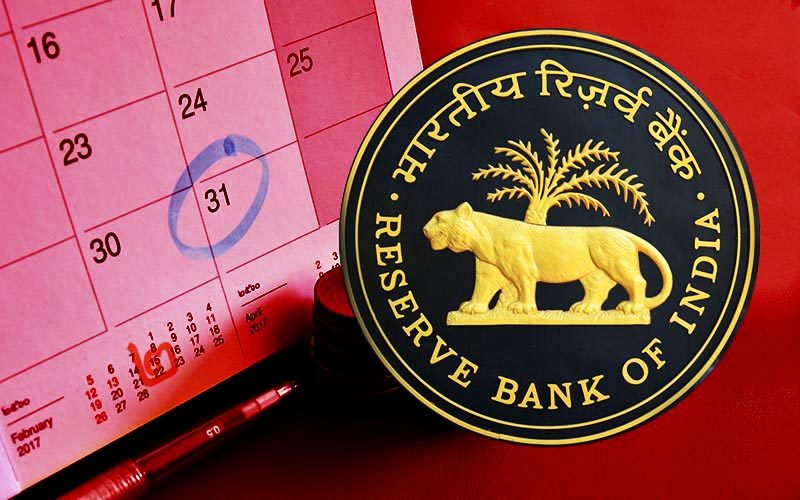RBI Comes To The Rescue Of Paytm Users, To Look At NHAI, NPCI; How Is The Current Situation Any Different Than Distressed Institutions Bailouts?
Following the recent regulatory restrictions imposed on Paytm's payments bank, the Reserve Bank of India (RBI) is set to hold meetings next week with key stakeholders such as the National Highways Authority of India (NHAI) and the National Payments Corporation of India (NPCI). These discussions are aimed at finalizing the procedures for migrating merchants and consumers from Paytm. While in the past the government's direct involvement in rescuing distressed businesses varies depending on the specific circumstances and sectors involved, there have been instances where government intervention has been observed to stabilize or support struggling enterprises like banks in particular.

As per reports, the Reserve Bank Of India (RBI) is looking to call meetings with key stakeholders, including the National Highways Authority of India (NHAI) and the National Payments Corporation of India (NPCI), among others, next week to finalize the procedures for migrating merchants and consumers from Paytm.
The discussions will involve NHAI, which administers the Fastag service, and NPCI, which is responsible for overseeing the Unified Payment Interface (UPI) infrastructure, along with other relevant parties.
The deliberations precede the release of frequently asked questions (FAQs) by the central bank, aimed at addressing inquiries received regarding Paytm after last week’s regulatory constraints imposed on the Noida-based firm’s payments bank.
One individual familiar with the matter explained, “The primary objective is to offer guidance to merchants regarding the transition issues.”

Paytm Payments Bank Ltd. (PPBL) faces restrictions from the central bank, effective February 29, preventing it from accepting new deposits or providing any banking services.
RBI Governor Shaktikanta Das, speaking during a post-monetary policy interaction with reporters on Thursday, indicated that the regulator would provide clarifications in the upcoming week.
Previously, Financial Services Secretary Vivek Joshi had informed in an interview on February 7 that the banking regulator might issue clarifications.
The sudden suspension of PPBL’s services has generated considerable uncertainty among both Paytm’s customers and merchant partners, who are seeking clarification on how the Reserve Bank of India’s action will affect their wallets and payment acceptance devices.
According to another source familiar with the discussions, NPCI is actively working to ensure that the UPI experience remains uninterrupted, and talks with the central bank are underway to facilitate a smooth transition to other banks.
In response, Paytm informed analysts last week that it would need to transfer virtual payment addresses (VPAs) for Unified Payments Interface (UPI) accounts and merchant quick response (QR) codes linked with PPBL to other banking partners.
Likewise, Fastags and wallets issued through PPBL will also require transfer to other banks.

Payments Bank has been under an embargo on adding new customers since March 11, 2022, and the latest directive against PPBL, issued by the RBI on January 31, cited a comprehensive external audit of Paytm revealing “persistent non-compliance and continued material supervisory concerns in the bank.”
Similarly, it was reported on February 5, that regarding the settlement of Paytm’s payments, lenders may need approval from the central bank before proceeding.
RBI Governor Das emphasized on Thursday that the regulator has consistently emphasized “bilateral engagement” with regulated entities, encouraging corrective action with sufficient time provided for implementation.
Das further stated, “When constructive engagement does not yield results or Regulated Entities (REs) fail to act, we resort to supervisory or business restrictions.”
He emphasized that such restrictions are proportionate to the severity of the situation and are implemented in the best interest of systemic stability and the protection of depositors’ or customers’ interests, stressing the regulator’s responsibility.

The Blast From The Past
While the government’s direct involvement in rescuing distressed businesses varies depending on the specific circumstances and sectors involved, there have been instances in the past where government intervention has been observed to stabilize or support struggling enterprises.
There have also been instances of government-led bailouts or restructuring efforts in specific industries such as aviation and telecommunications. For example, the government’s bailout of Air India in 2012 aimed to address the airline’s financial distress and revitalize its operations.
Another example is that of Kingfisher Airlines; in 2012, the government provided financial assistance to Kingfisher Airlines, which was facing severe financial difficulties and operational challenges.
The assistance included debt restructuring, infusion of capital, and efforts to revive the airline’s operations; while the ultimate outcome for Kingfisher Airlines was not successful, the government’s intervention was aimed at preserving jobs, maintaining connectivity, and safeguarding the interests of stakeholders in the aviation sector.
Yet, another example is the government’s intervention to revive the state-owned telecommunications company, Bharat Sanchar Nigam Limited (BSNL), which was facing intense competition from private telecom operators, grappling with financial losses, and struggling to sustain its operations.
In 2019, the government announced a revival package for BSNL, which included a combination of measures such as capital infusion, voluntary retirement schemes for employees, and a plan to monetize the company’s assets.
The intervention was aimed to restructure BSNL’s operations, enhance its competitiveness, and ensure the continuity of its services.
In India, there have also been instances of banks facing financial difficulties, and the government has taken various measures to address these challenges and stabilize the banking sector.
Here are some notable examples –
1. Punjab National Bank (PNB) Fraud Case
In 2018, Punjab National Bank, one of India’s largest public sector banks, was involved in a massive fraud case amounting to over $1.8 billion (₹13,000 crore).
The fraud, perpetrated by diamond merchants Nirav Modi and Mehul Choksi, involved fraudulent issuance of Letters of Undertaking (LoUs) and Letters of Credit (LCs).
The government and the Reserve Bank of India (RBI) took several steps to address the fallout from the fraud, including capital infusion into PNB to shore up its financial position, regulatory reforms to strengthen internal controls and risk management practices in banks, and legal actions against those involved in the fraud.
We all know what happened to Nirav Modi and Mehul Choksi.
2. Yes Bank Crisis
In March 2020, Yes Bank, then a prominent private sector bank in India, faced a severe liquidity crisis due to mounting bad loans and deteriorating financial health.
The RBI intervened to rescue the bank by imposing a moratorium and superseding its board. Subsequently, a reconstruction scheme was announced, under which State Bank of India (SBI) and other financial institutions infused capital into Yes Bank to stabilize its operations and protect depositors’ interests.
The government also approved a restructuring plan for the bank, leading to changes in its management and governance structure.
3.IL&FS Crisis
While IL&FS (Infrastructure Leasing & Financial Services) is not a bank but a non-banking financial institution (NBFC), its crisis had significant implications for India’s financial sector.
In 2018, IL&FS defaulted on its debt obligations, triggering concerns about systemic risks and the stability of India’s financial markets.
The government stepped in to address the crisis by superseding IL&FS’s board, initiating a resolution process, and appointing a new board to oversee the restructuring efforts.

Hence, while Paytm is primarily known as a digital payments platform rather than a traditional bank, its regulatory issues and challenges have similarities with those faced by banks and financial institutions in India.
In particular, Paytm Payments Bank Ltd. (PPBL) encountered regulatory restrictions and scrutiny from the Reserve Bank of India (RBI), similar to banks that have faced financial difficulties in the past.
The context of Paytm’s situation can be framed around regulatory concerns, specifically related to compliance and governance issues.
For example –
1. Regulatory Scrutiny – Paytm is facing regulatory scrutiny from the RBI, resulting in restrictions on its operations.
The scrutiny could be compared to the regulatory actions taken against banks like Punjab National Bank and Yes Bank in response to governance lapses and financial irregularities.
2. Impact on Customers and Partners – Just as customers and stakeholders of troubled banks faced uncertainty and concerns about the safety of their deposits and investments, Paytm’s customers and merchant partners have expressed similar anxieties about the implications of regulatory actions on their wallets, payment acceptance devices, and business operations.
3. Government Intervention – The involvement of government agencies, such as the RBI and possibly other regulatory bodies, reflects the broader context of government oversight and intervention in the financial sector to maintain stability and protect the interests of consumers and investors.
The Last Bit, while Paytm’s situation differs from traditional banks in certain aspects, such as its business model and regulatory framework, the context of regulatory challenges and government intervention shares similarities with past instances involving distressed banks and financial institutions in India.
These examples illustrate how government intervention plays a crucial role in rescuing distressed businesses; however, the question is, why not address the problems at the very outset rather than wait for them to assume such immense proportions and with such massive implications?





